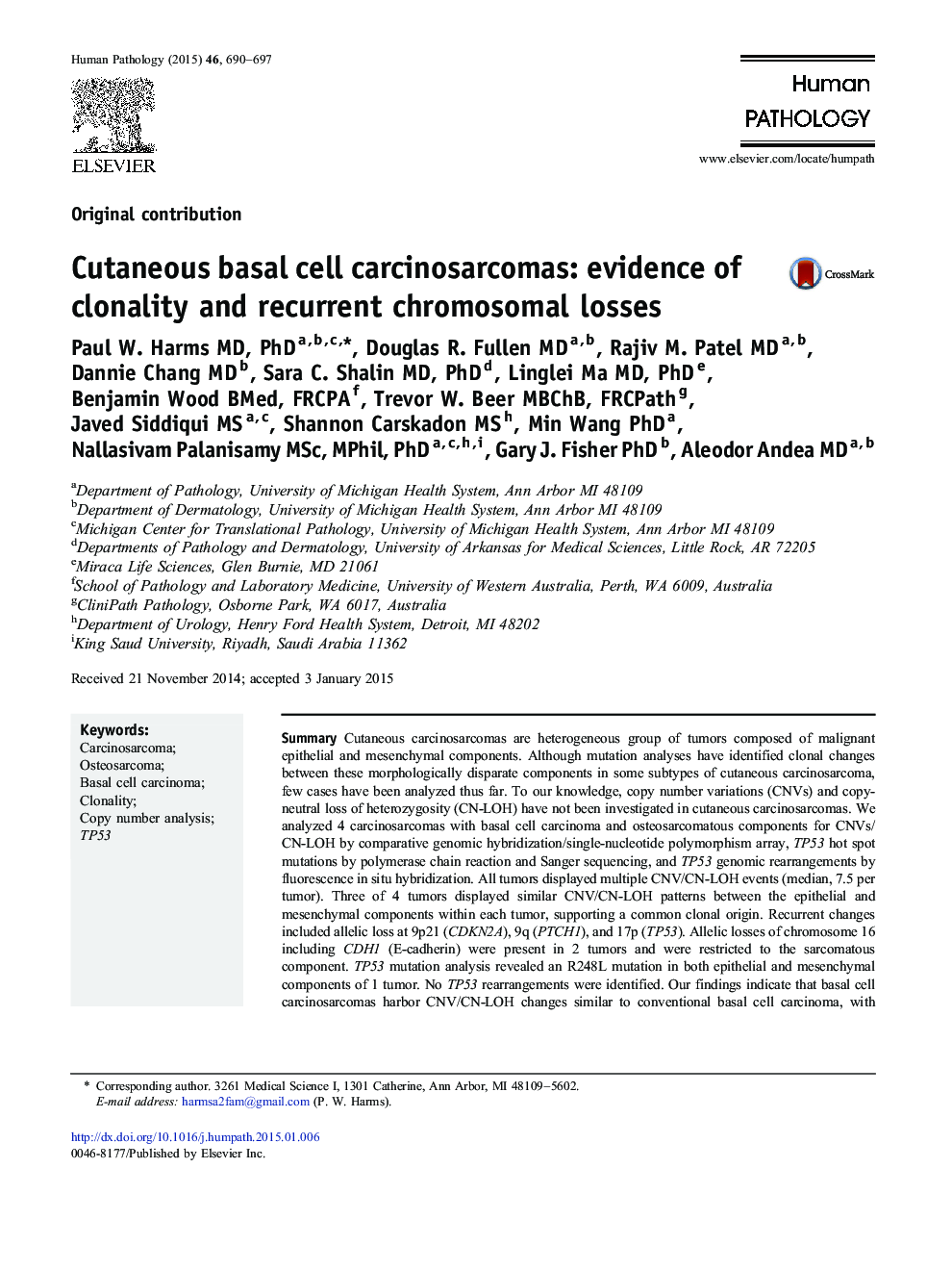| Article ID | Journal | Published Year | Pages | File Type |
|---|---|---|---|---|
| 4132666 | Human Pathology | 2015 | 8 Pages |
SummaryCutaneous carcinosarcomas are heterogeneous group of tumors composed of malignant epithelial and mesenchymal components. Although mutation analyses have identified clonal changes between these morphologically disparate components in some subtypes of cutaneous carcinosarcoma, few cases have been analyzed thus far. To our knowledge, copy number variations (CNVs) and copy-neutral loss of heterozygosity (CN-LOH) have not been investigated in cutaneous carcinosarcomas. We analyzed 4 carcinosarcomas with basal cell carcinoma and osteosarcomatous components for CNVs/CN-LOH by comparative genomic hybridization/single-nucleotide polymorphism array, TP53 hot spot mutations by polymerase chain reaction and Sanger sequencing, and TP53 genomic rearrangements by fluorescence in situ hybridization. All tumors displayed multiple CNV/CN-LOH events (median, 7.5 per tumor). Three of 4 tumors displayed similar CNV/CN-LOH patterns between the epithelial and mesenchymal components within each tumor, supporting a common clonal origin. Recurrent changes included allelic loss at 9p21 (CDKN2A), 9q (PTCH1), and 17p (TP53). Allelic losses of chromosome 16 including CDH1 (E-cadherin) were present in 2 tumors and were restricted to the sarcomatous component. TP53 mutation analysis revealed an R248L mutation in both epithelial and mesenchymal components of 1 tumor. No TP53 rearrangements were identified. Our findings indicate that basal cell carcinosarcomas harbor CNV/CN-LOH changes similar to conventional basal cell carcinoma, with additional changes including recurrent 9p21 losses and a relatively high burden of copy number changes. In addition, most cutaneous carcinosarcomas show evidence of clonality between epithelial and mesenchymal components.
